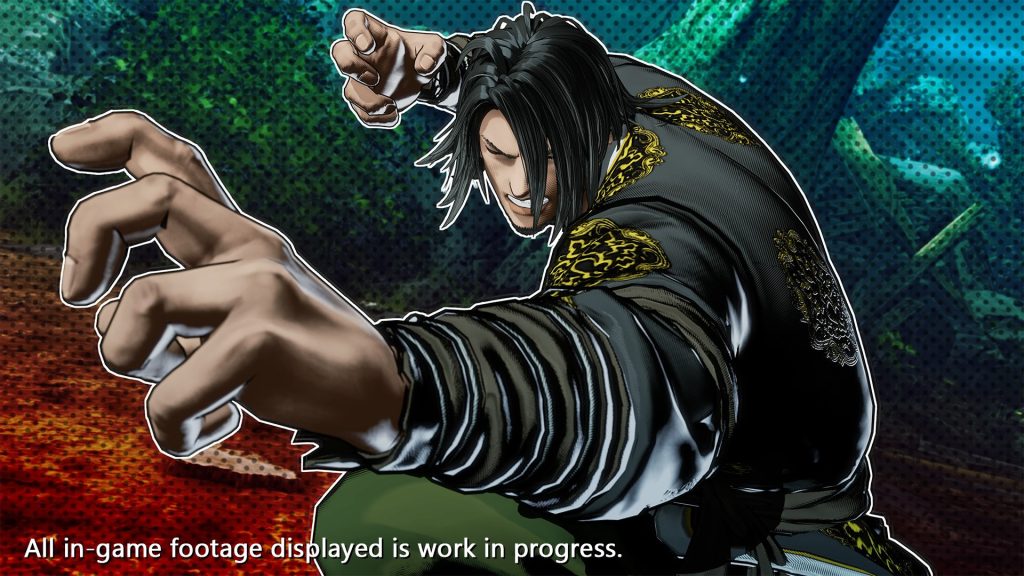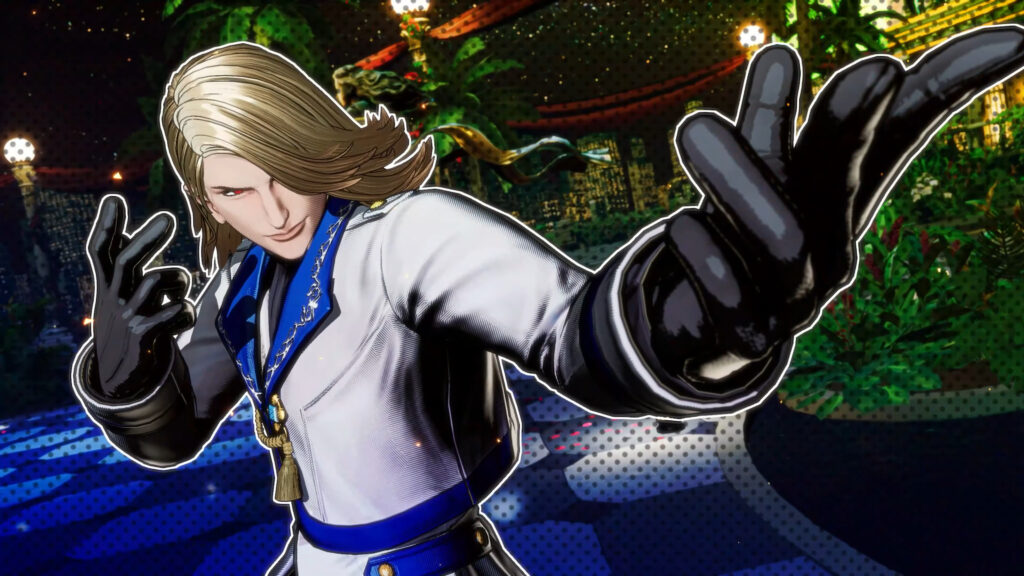Following Dragon Ball: Sparking! Zero and BLEACH: Rebirth of Souls, another iconic yet enduringly absent fighting series is making a hotly anticipated return. After two-and-a-half decades on the side-lines – with headline characters relegated to making cameo appearances in other fighting games – Fatal Fury is back with Fatal Fury: City of the Wolves. A direct sequel to Garou: Mark of the Wolves, a game many consider amongst fighting games’ greatest, City of the Wolves revisits and revitalises mechanics from its predecessor whilst simultaneously stamping its own identity via eye-catching art styles and novel fighting systems.
There’s a lot going on under the hood, but newcomers – or, indeed, those somewhat rusty fighting game players – will be pleased the developer have taken a leaf out of Tekken 8’s book in that control systems exist to make acclimatising to the game’s break-neck, offense-centric brawling more approachable. In addition to the returning four-button arcade style control scheme, there is the option to play with the more basic, beginner friendly smart style control scheme which allows new players to immediately pull off awe-striking moves by eschewing difficult motion controls.
There is also a thorough tutorial mode to further help with player onboarding which, amongst giving chance to practice the game’s numerous techniques, provides explanations for why and when certain manoeuvres should be favoured over others. All in all, given the game’s complexity the developers are providing an inviting package; a relief of sorts that they’ve followed the recent trend amongst fighting games to cater to those who’re, shall we say, less skilled.
We’ll get into the meat of the Fatal Fury: City of the Wolves’ distinct fighting mechanics momentary, but first a word on that awesome, comic book style art. In short, if there was ever a fighting game to tempt an outsider into its world, it’s this. City of the Wolves balances cartoony, yet distinct, art and character design with fistfights which feel impactful. There’s a danger with this sort of aesthetic for fighting to feel lightweight, for style to dominate over substance, but with City of the Wolves deploying an over-exaggerated staccato effect to distinguish every blow, each kick, punch, block, and throw lands with force.
And this visual feedback is important as it helps players keep track of one of City of the Wolves’ novel features in its REV meter, a function most similar in design to Street Fighter 6’s drive gauge. A part of the REV system, which is City of the Wolves’ new fighting toolkit, the REV meter fills when players unleash a REV action. When the REV meter maxes out, REV actions become unavailable for a time. This ensures that these REV actions – ostensibly powered-up versions of special attacks and guards – cannot be spammed. Players will need to think strategically as to when they execute a REV action.
Comprising the REV toolkit are REV arts which are more powerful versions of special attacks such as throwing faster projectiles or unleashing stronger punches, REV accel which lets players combo REV arts into other REV arts, and REV guard which is a special kind of block which puts distance between you and your opponent, more so than a regular block, whilst negating chip damage from special moves. REV blows blend offensive and defensive manoeuvres into one unique motion, a hard-hitting strike which brushes off enemy attacks in tandem with dealing immense damage. REV blows can be achieved mid-air, plus can be combo’d after REV arts via REV accel.

REV blows might seem overpowered, but what needs pointing out is REV blows can only be executed when a fighter’s S.P.G. is active, that is their Selective Potential Gear, which is set during character selection to become active at the beginning, the middle, or the end of a fighter’s health gauge. So, thinking strategically again, players can enter fights guns blazing, or prefer S.P.G. to activate when their health is running low, the tactic being to use REV blows to turn the tide of battle and snatch victory from the jaws of defeat. S.P.G. also boosts overall attack strength, so even when the REV meter is maxing out players still feel it’s benefit.
It’s interesting to see how S.P.G. and REV blows will play out as the game becomes more established amongst its player base. It could be rare that both players activate S.P.G. simultaneously, and in this instance REV blows can’t be countered with another REV blow, leading to a potential imbalance and over-simplification of the game’s complex mechanics.
The REV meter can be recovered via the following methods: waiting, walking, or dashing towards your foe, successfully landing an attack, or via a couple of techniques returning from Fatal Fury games of old: Just Defence and Hyper Defence. But before we explain what those defensive techniques are, it’s here, when REV meters are maxed, that another element of strategy comes into play albeit with a shade more risk versus reward. See, when REV meters are at their maximum capacity a fighter’s guard gauge has potential to deplete too. Displayed via a small meter below player health, the guard gauge will reduce with every blocked attack, and should this reach zero you’ll enter a guard crush state meaning it’ll take longer to recover from hits.
Just Defence tasks fighters with blocking their opponent’s strike at precisely the right moment – akin to Street Fighter’s parry mechanic, perhaps – with boons to health recovery, REV meter decrease, and the opportunity to perform a Guard Cancel the reward, the latter being an interruption to your own block status to perform a counter strike, with some counters such as Ignition Gear or Redline Gear (Gears, in City of the Wolves, are essentially a category of special move) executing more rapidly than if chosen any other time. Hyper Defence ups the ante in that players must execute a forward input with surgical precision during a multi-hit attack, although the rewards are the same as in Just Defence.
Further options to recover REV meter are possible though, and these are especially useful if your fingers aren’t nimble enough to execute Just or Hyper Defence. Feints are essentially special move false starts and are a viable option to keep some distance between you and your opponent whilst Braking cancels the start-up animation for special moves, creating opportunities to unleash combos or alternative specials; to flummox your opponent by clouding their input reading.

There are loads to get to grips with here, and we haven’t even mentioned the host of game modes available on release. Ranked, casual, and room matches – all with rollback netcode and crossplay – are available, plus character customising colour edit mode, jukebox mode if you fancy listening to tracks from Fatal Fury’s past entries, and the rather intriguing clone mode in which you can train against AI versions of yourself and past opponents.
The headline game mode however is one for single players to enjoy. Episodes of South Town is a single player RPG mode whereby you’ll square up against foes dotted across the titular town, with victory in a variety of rule-specific skirmishes yielding reward points to level up your character.
Surely a shoo-in for the most exciting fighting game releasing this year, from what we can see given results of the recent open beta the only drawback with Fatal Fury: City of the Wolves is its lacklustre matchmaking. At the time of this features writing another open beta is scheduled to start imminently. Fingers crossed this helps the developers identify the root cause of the game’s matchmaking problems as, sort that out, and Fatal Fury: City of the Wolves has potential to re-enter the pantheon of video games’ greatest fighting experiences.
Note: The views expressed in this article are those of the author and do not necessarily represent the views of, and should not be attributed to, GamingBolt as an organization.














